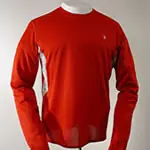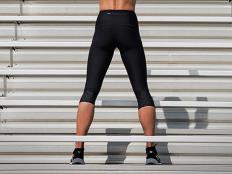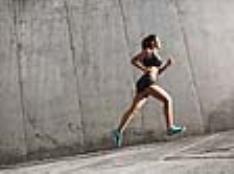
Tennis shoes won't do, and neither will those beat-up running shoes you've used occasionally for the past six years and have just retrieved from the back of the closet. You need fresh, well cushioned shoes that fit well and match your foot type and gait. Running shoes are designed, after all, for running, and as a beginning runner your legs and feet need all the protection they can get.
Shoes are really the only piece of equipment you need to invest in, and while you don't need to buy the most expensive pair in the store, don't short-change yourself. Good shoes are your best protection against injury.
More: Customize Your Shoe With These Tricks
What to Wear
Wear what's comfortable. Keep in mind that many new runners overdress at the beginning. Once you're warmed up, your extra body heat will make it feel about 20F warmer. No need to wear more than shorts and a tee-shirt for temperatures above 55F. Step up to tights/sweatpants and a long-sleeve tee for temperatures above 45F. Add a sweatshirt, or better yet, a lightweight nylon or goretex shell for lower temperatures. Also consider a stocking cap and cotton or polypropylene gloves (cotton gardening gloves will do the trick for under $2). To find out more about these various high-tech fabrics and what they do for you, read "The Well Dressed Runner."Time to Run
To show everyone you're really in the know, just start calling that thing on your wrist a chronograph. For some runners, it's just not the same if you call it a watch. Whatever you choose to call your timepiece, you'll probably find a "chronograph" with a stopwatch helpful, especially if it can store lap times.
At the beginning, you'll only need the watch to keep track of how long you're running, not how fast. Your emphasis as a new runner should be on the effort and time of your outings, not your speed.
More: Newbie Runners Guide to Get on the Road
 Sign up for your next race.
Sign up for your next race.
About the Author
Josh Clark
Get ACTIVE on the Go


Couch to 5K®
The best way to get new runners off the couch and across the finish line of their first 5K.
Available for iOS | Android







Discuss This Article